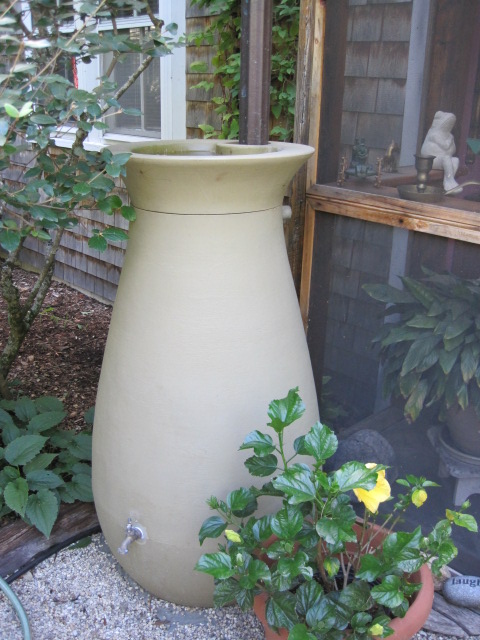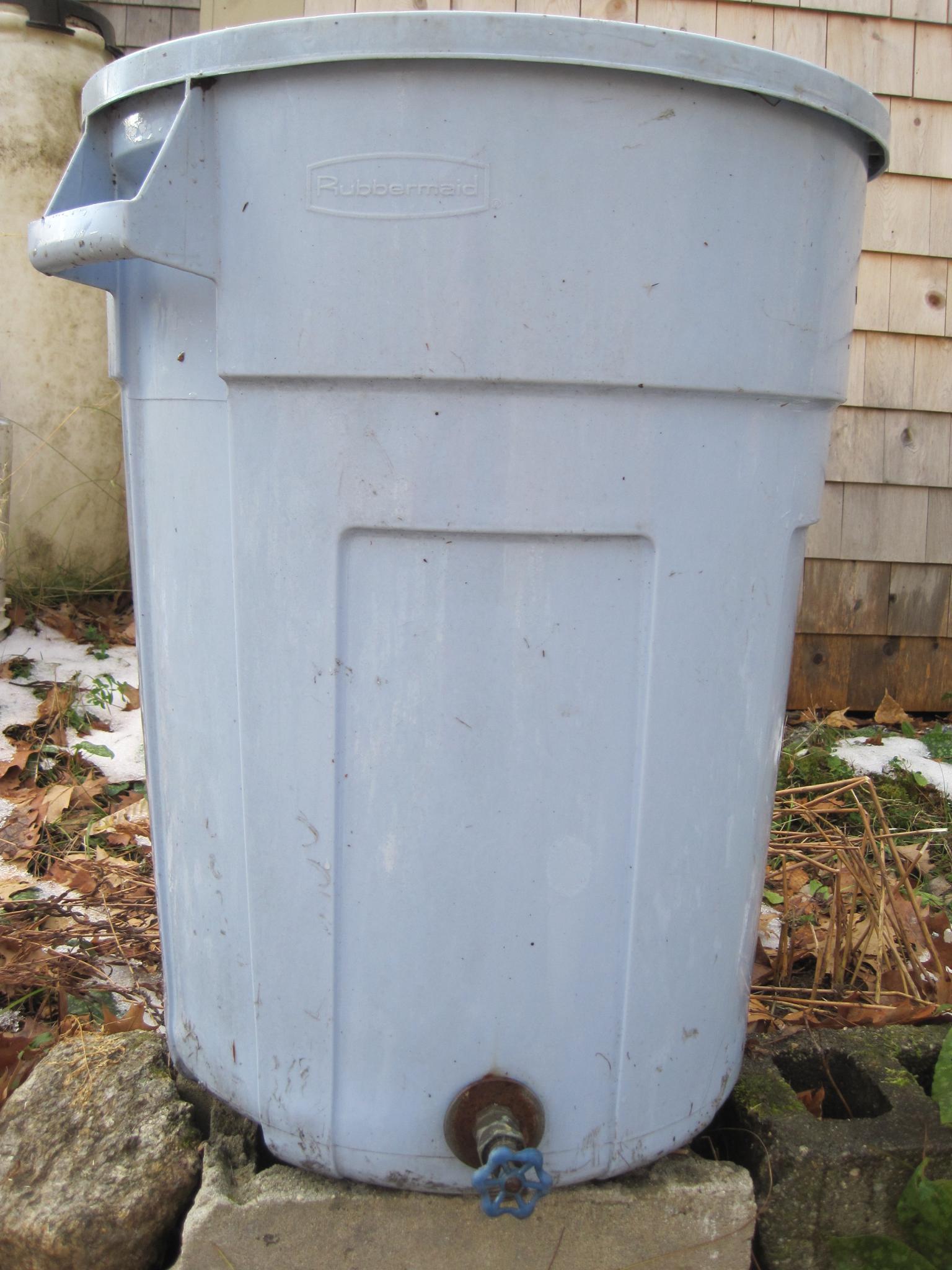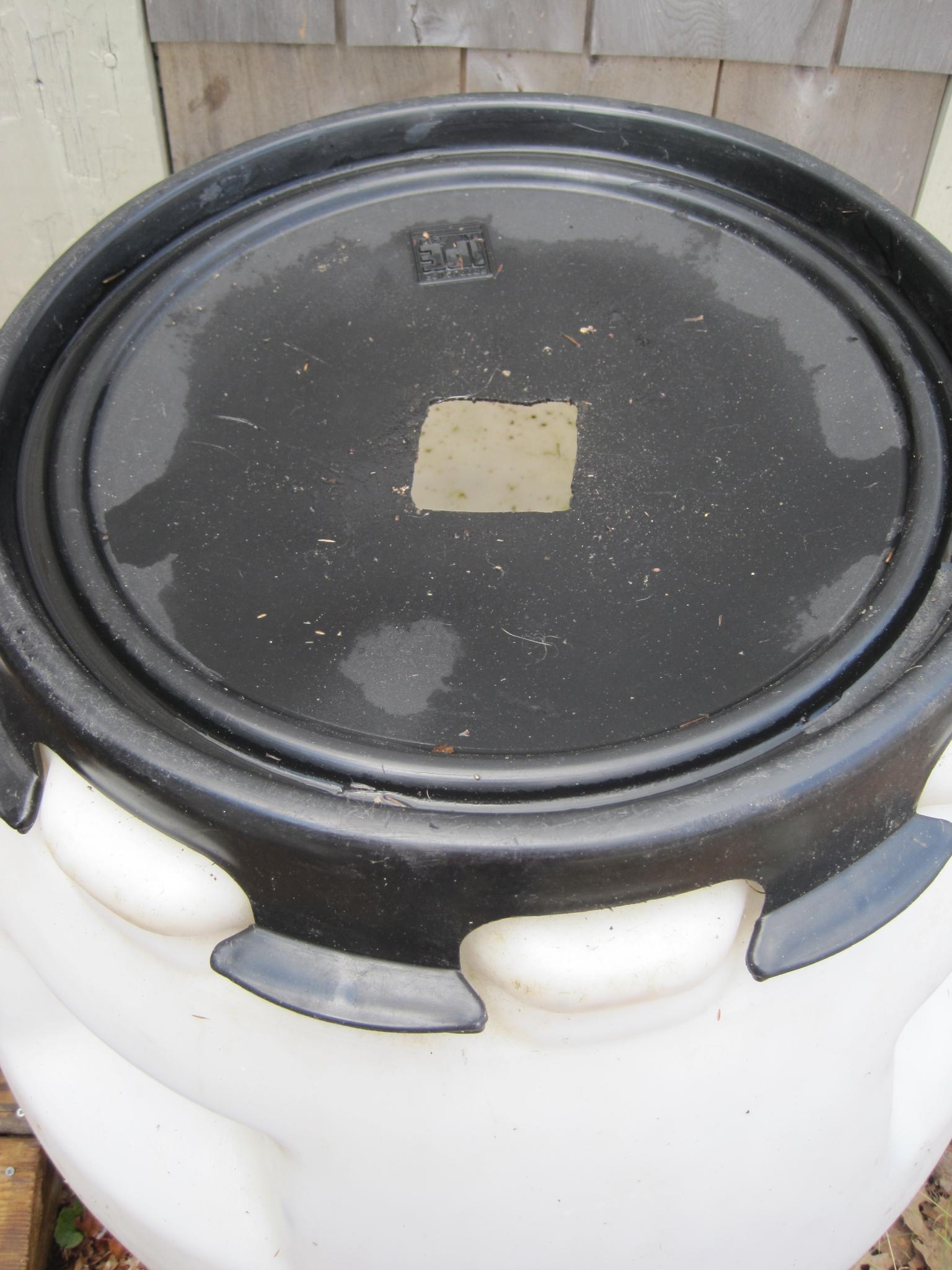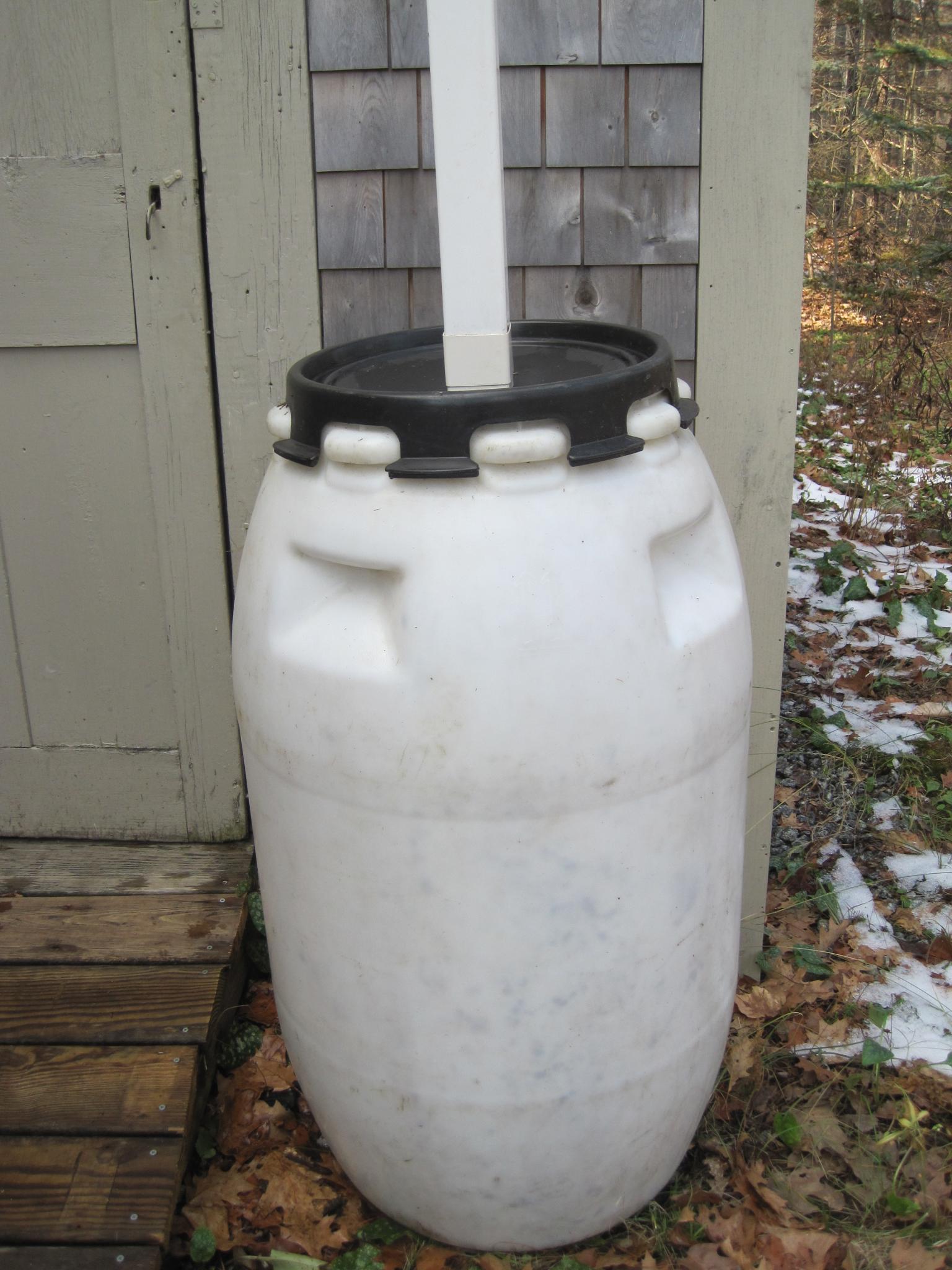To conserve water and save yourself some money, consider adding a rain barrel to your yard. Rain barrels are positioned to catch rainwater from your roof, which cuts down on the water bill. Plus, rainwater is great for plants!
Water is a precious resource. In many areas of the country, water bans are becoming an annual occurrence as summers get hotter and drier and populations increase. This makes watering your garden almost impossible. And even if outdoor watering is not banned, it can be expensive. Water bills continue to rise and in many communities sewer bills are based upon the metered consumption of water whether that water goes into the sewer or onto your garden.
What is a Rain Barrel?
Rain barrels are large drums which collect all of the rainwater from your roof downspouts—water which would otherwise be lost. They are added to any home, building, or shed with gutters and downspouts. They come in a variety of sizes but a 55-gallon container is probably most common.
Often a screen is at the top of a downspout to catch any leaves or twigs or insects. There is generally a spigot at the bottom of the rain barrel which can either be attached to a hose or used to fill a watering can.
Depending on the size of your roof you can collect a lot of water in a light rainstorm. For every 1 inch of rainfall each square foot of your roof collects .6 gallons of water. A 20X30 foot roof would gather 360 gallons! Even if only half of that was collected it would be 180 gallons of water you didn’t have to pay for.
Rain water is great for your plants. It is soft—lacking in minerals such as calcium, iron, magnesium, and lime—and has no added chemicals such as chlorine or fluoride that municipal water often contains.

This store-bought barrel is as beautiful as it is functional!
Ready-made barrels are available to purchase but constructing a rain barrel couldn’t be easier.

We used this barrel in our first vegetable garden. It has since been retired.
DIY Rain Barrels
Our first rain barrel was a 40-gallon trash can. We added a spigot to the bottom so we could attach a hose to it and let the water gravity feed down the hill to the garden where it fed our soaker hoses. We attached a gutter to the long side of our shed roof and directed the downspout into the barrel. A piece of screen over the outflow kept debris from clogging the spigot. Since it was emptied often, mosquitoes were not a problem. The open top allowed me to dip out water into a watering can so I could hand-water other plants in the yard but a heavy rain would easily overflow it.
That barrel was such a success that when we were gifted a 55-gallon juice barrel we turned it into second rain collector. This time we cut a hole in the top to accept a downspout.

A drill and a jigsaw were all we needed to cut a hole in the heavy plastic top.
We slanted the whole length of gutter toward one side of the building and fit the downspout into the barrel.

This barrel helped to supplement water for the garden until we finally drilled a reliable well.
Since it filled rapidly, we also cut a hole near the top to add an overflow pipe which ran into a bucket. Waste not, want not!
A few safety precautions: Rainwater is for non-potable reuse; it’s good for the garden but we don’t use it for drinking. Also, don’t leave water in your rain barrel for long periods of time; we generally use the water every week. It also needs to be able to refill during rainstorms. Finally, drain and wash out the rain barrel before winter and store it upside down in a protected location. Clean the barrel using a non-toxic substance such as vinegar to remove residue or algae.














